Because of real concerns about our pollinator population the Environmental Protection Agency (EPA) asked each state to develop a customized pollinator protection plan with recommendations on improving pollinator health. This is not a regulatory document but just guidelines to help our pollinators.
Georgia’s plan is finished! Protecting Georgia’s Pollinators (PGP) was developed as a joint effort between UGA’s Department of Entomology and the Georgia Department of Agriculture. The author committee is made up of Jennifer Berry, Kris Braman, Keith Delaplane, Mike Evans, Philip Roberts, and Alton Sparks. Those of you who are beekeepers may recognize several of these names as people heavily involved in pollinator research.
The draft of the plan was sent to over 35 groups across the state for their input – Georgia Beekeepers Association, Georgia Fruit and Vegetable Growers Association, the Peach Commission, the Blueberry Commission to name a few. The result is a plan that has a role for all of Georgia’s citizens.
As community and school gardeners we have a vested interest in pollinator health. More pollinators means more food from our gardens. Not to mention the beauty of enjoying the insects at work.
Guidelines from the pollinator plan that we can garden by include:
If possible leave areas of your property permanently undisturbed for soil-nesting bees. Sun-drenched patches of bare soil, roadsides, ditch banks, and woodland edges are prime bee habitats.
Dedicate pollinator habitat spaces in your garden. UGA’s Pollinator Spaces Project has many resources to help with this. Bees need a season-long unbroken succession of bloom. Many plant species bloom in the spring. Remember to plant plants to bloom in mid- to late-summer including Vitex, sages, and sunflowers. Your local UGA Extension office will have information on what pollinator plants grow well in your area.
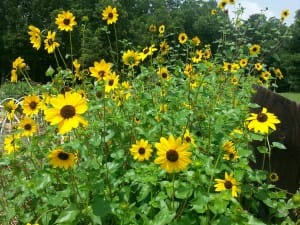
Know the beekeepers in your area. If your garden has a bee hive you want to be very careful about pesticide application and you will want to review in detail the section on pesticide users in the plan.
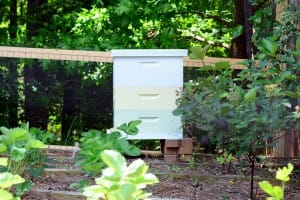
Consider increasing bee nesting sites by providing bee homes. These consist of solid wood pre-drilled with 1/4 to 1/2 inch holes that are at least 3-inches deep. It is important that the tunnels terminate in dead-ends. These are easy to create and a nice addition to any garden.
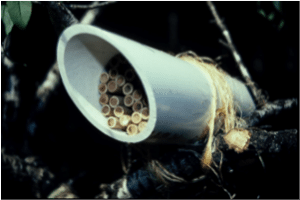
Educate your gardeners about insect behavior. For example, the flight and nesting behavior of certain solitary bees happens in bursts of extreme activity. In the spring or summer you may see a large number of bees flying out of tunnels in the grass over your garden all at once. These are solitary bees and they are gentle, and their sting risk is extremely low! Enjoy watching them!
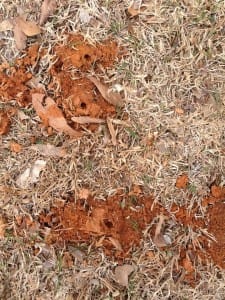
If you think insects are a problem in your garden take steps to correctly identify the insects and determine, with the help of your UGA Cooperative Extension Agent, if remedial action is necessary.
If your garden is located in a park or other public space that is maintained by local landscape crews, make sure that if they need to apply insecticide for turf pests that they mow the grass immediately before applying the pesticide. The mowing will get rid of weed flowers that may attract bees.
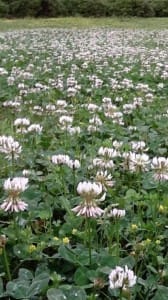
Follow all pesticide label directions and precautionary statements. THIS IS THE LAW. EPA is now requiring a “Protection of Pollinators” advisory box on certain pesticides labels. Look for the bee hazard icon and instructions for protecting bees and other pollinators.
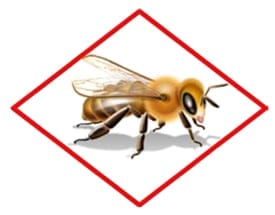
Take some time to look at Protecting Georgia’s Pollinators and you will see we all have a role to play. If you need any information about the plan or protecting pollinators contact your local UGA Cooperative Extension Agent.
Happy Gardening!
- ParSLAY the Day! - June 12, 2024
- 6th Annual Great Southeast Pollinator Census - May 28, 2024
- Are you ready for Pepper Palooza? - July 5, 2023
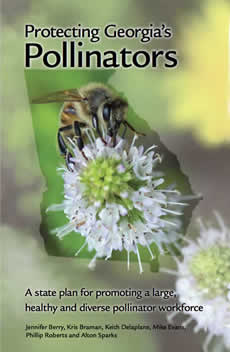
Thanks for summary of ways to protect our pollinators!